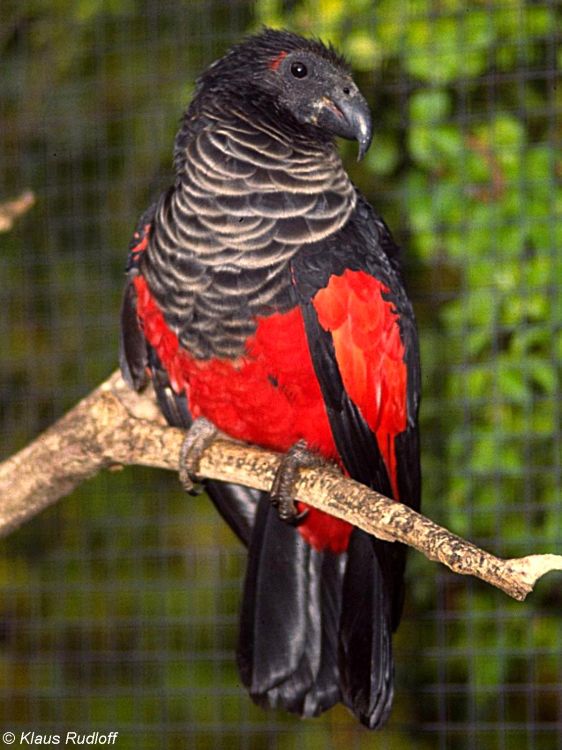
Psittrichas fulgidus
SUBFAMILY
Psittacinae
TAXONOMY
Banksianus fulgidus Lesson, 1830, New Guinea. Monotypic.
OTHER COMMON NAMES
English: Vulturine parrot, bare-headed parrot; French: Psittrichas
de Pesquet; German: Borstenkopf; Spanish: Loro
Aguileсo.
PHYSICAL CHARACTERISTICS
18 in (46 cm); 1.4–1.6 lb (690–800 g). Large bird with grayish
black plumage, red underside, bare face, and very broad tail.
DISTRIBUTION
Mountains of mainland New Guinea.
HABITAT
Foothills and lower montane forests, occasionally in adjacent
lowland forest; also tall secondary growth near watercourse.
BEHAVIOR
Resident. Singly, in pairs, or small flocks seen in flight or sitting
in topmost branches of tall trees; when not feeding retreats to
rest in tallest trees, sometimes sitting for hours in rain or sunshine
atop emergent dead limbs protruding well above surrounding
canopy; does not climb, but jumps from branch to
branch with jerky motion and flicking of tail. Noisy and conspicuous
in flight, call-notes being heard from afar; shallow
wingbeats interspersed with gliding characteristic of flight, and
distinctive appearance from short tail, broad wings, and outstretched
slender neck; regular flights at dusk to nighttime roosts.
FEEDING ECOLOGY AND DIET
Feeds arboreally, taking soft fruits, particularly figs; also blossoms
and probably nectar; seen feeding on large Freycinetia
flowers. Base of bill becomes caked with fruit pulp, suggesting
bare face may have evolved to prevent matting of feathers.
REPRODUCTIVE BIOLOGY
Monogamous. Fledged juveniles recorded in December, adults
in breeding condition April–May, laying female observed in
February. Nest in cavity excavated by birds in dead tree at 39
ft (12 m) above ground; egg-laying to fledging exceeded 76
days. In captivity, courtship feeding prior to laying of two eggs;
incubation by female for 31 days.
CONSERVATION STATUS
Vulnerable. Fairly common in remote areas, but scarce or absent
in accessible districts because of persistent hunting; one of
the first birds to disappear following local introduction of
firearms; also threatened by deforestation. Listed on CITES
Appendix II.
SIGNIFICANCE TO HUMANS
Hunted intensely for food and feathers; skins highly prized and
widely used as “bride price.”
Other popular Animals
Photo Gallery of - Pesquet’s parrot
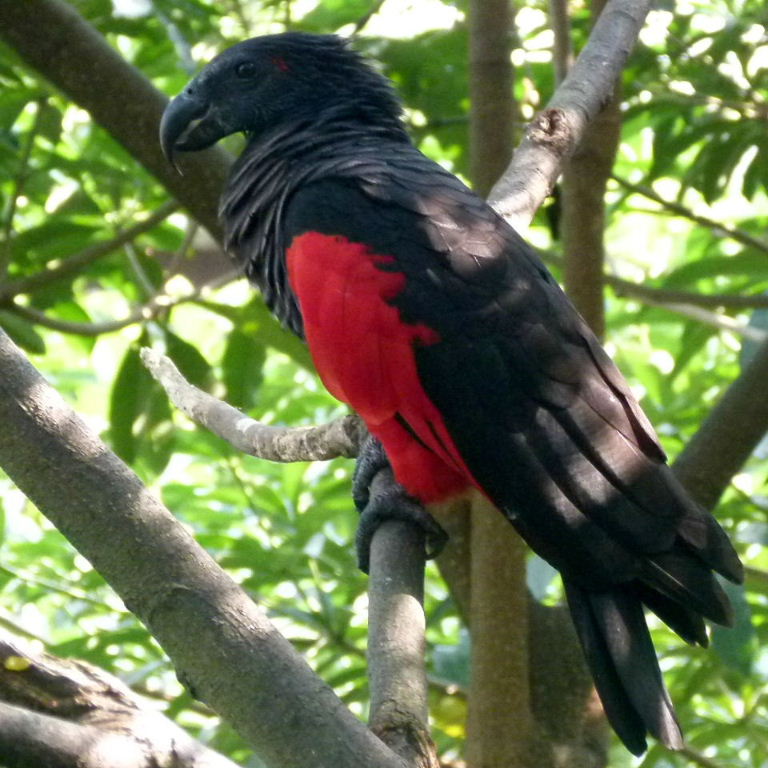
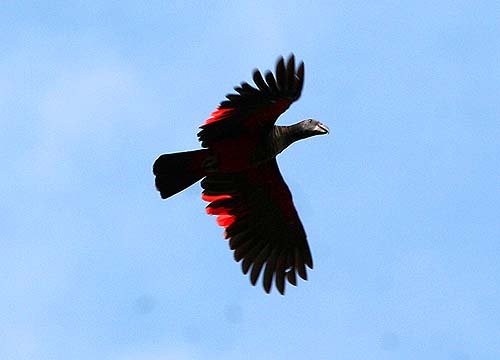
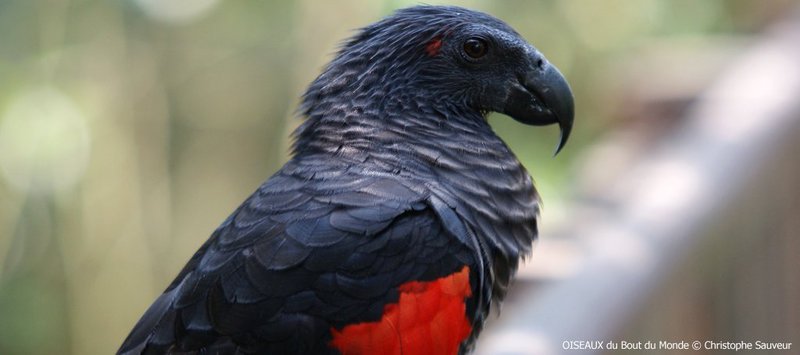
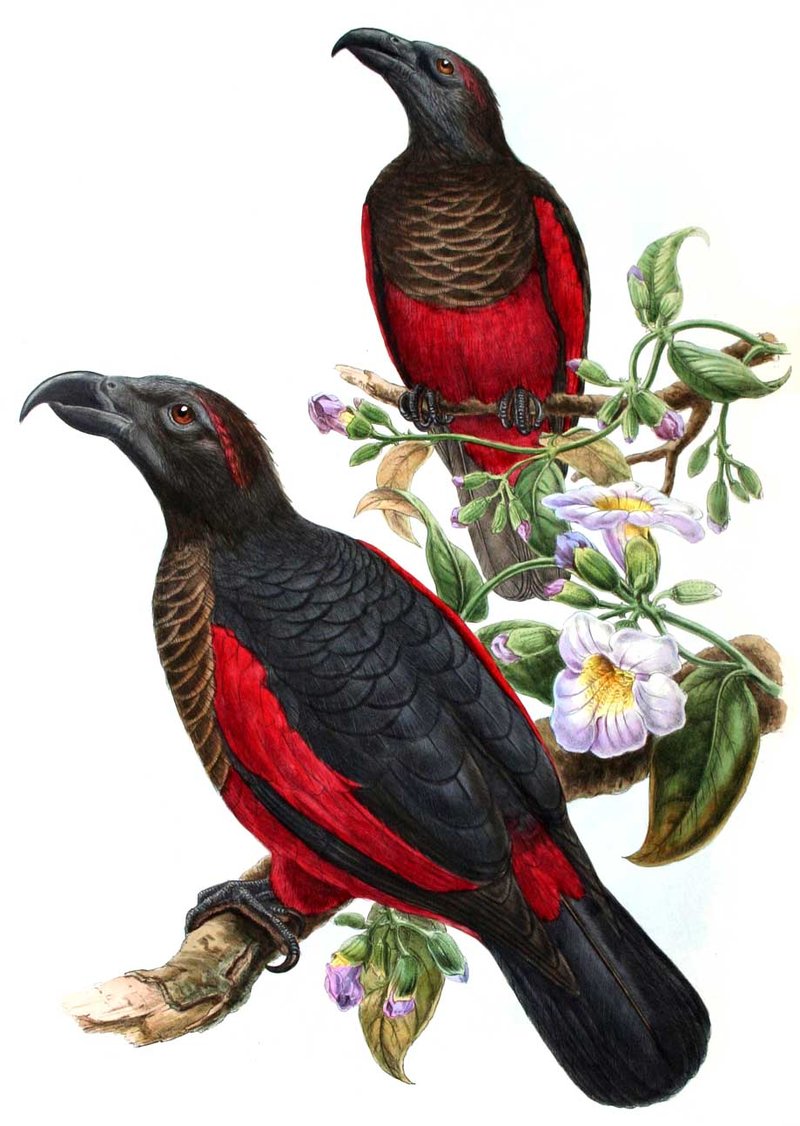
 Animalia Life
Animalia Life